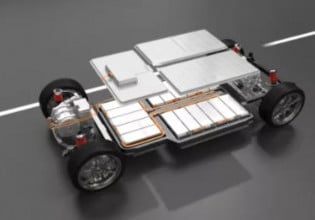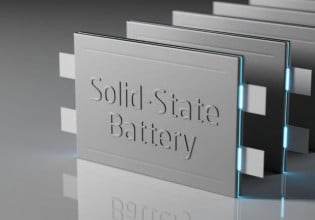Silicon Nanoparticles Found to Increase Lithium-Ion Battery Capacity Ten Times
University of Alberta, Canada chemists Jillian Buriak (pictured above in a photo by John Ulan), Jonathan Veinot and their team found that nano-sized silicon particles overcome a shortcoming of using silicon in lithium-ion batteries. The discovery could lead to a new lithium-ion battery design with ten times the capacity of current lithium-ion batteries.
"We wanted to test how different sizes of silicon nanoparticles could affect fracturing inside these batteries," said Jillian Buriak, a University of Alberta chemist and Canada Research Chair in Nanomaterials for Energy.
Silicon holds potential for constructing much higher-capacity batteries both because it's abundant, and it can absorb much more lithium than the graphite in current lithium-ion batteries.
However, after numerous charge-and-discharge cycles, silicon is prone to fracturing and breaking due to its expansion and contraction as it absorbs and releases lithium ions.
While existing research shows that forming silicon into nano-scale particles, tubes, or wires helps prevent it from breaking, Buriak and fellow University of Alberta chemist Jonathan Veinot and their team wanted to know the what the size these structures had to be to maximize the silicon's benefits and minimize the drawbacks.
The researchers looked at four different sizes of silicon nanoparticles that were evenly dispersed within highly conductive graphene aerogels. The graphene aerogels made of carbon featured nanoscopic pores, to compensate for silicon's low conductivity.
They found that the larger composite nanoparticles showed a higher initial capacity but demonstrated a rapid decay of capacity retention over 100 charge-and-discharge cycles. They observed that the smallest particles measuring a mere three billionths of a meter in diameter demonstrated the best long-term stability after many charging and discharging cycles.
"As the particles get smaller, we found they are better able to manage the strain that occurs as the silicon ‘breathes' upon alloying and de-alloying with lithium, upon cycling," explained Buriak.
Specifically, they observed that the annealed nanocomposite composed of the smallest silicon nanocrystals, Si3/GA, exhibited a stable specific capacity of about 1100 mAh/g and had a capacity-retention of over 90% after 500 cycles when tested at a current density of 400 mA/g.
The research has potential applications in "anything that relies upon energy storage using a battery," said Veinot, who is the director of the ATUMS graduate student training program that partially supported the research.
"Imagine a car having the same size battery as a Tesla that could travel 10 times farther or you charge 10 times less frequently, or the battery is 10 times lighter."
Veinot said the next steps in making the discovery practical include devising a faster, less expensive way to produce silicon nanoparticles to make them more economical for industry and technology developers.
The study, "Size and Surface Effects of Silicon Nanocrystals in Graphene Aerogel Composite Anodes for Lithium Ion Batteries," was published in Chemistry of Materials.






